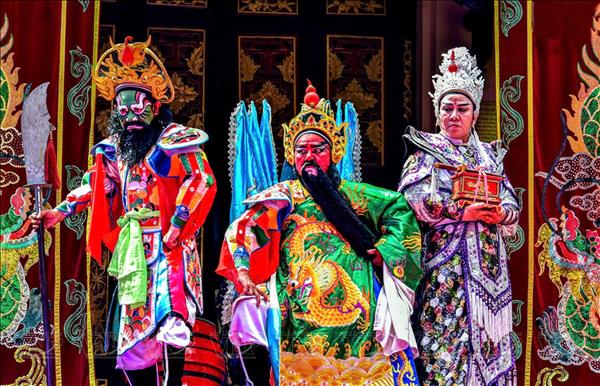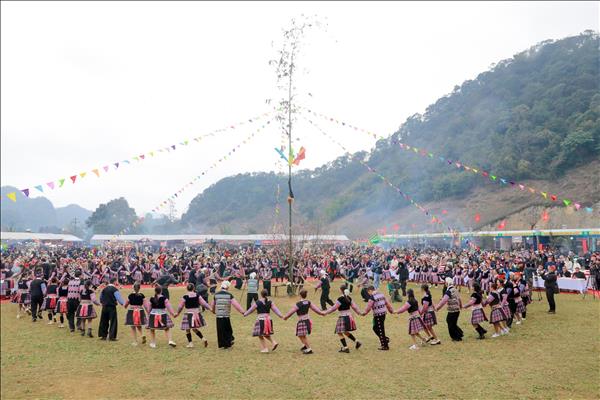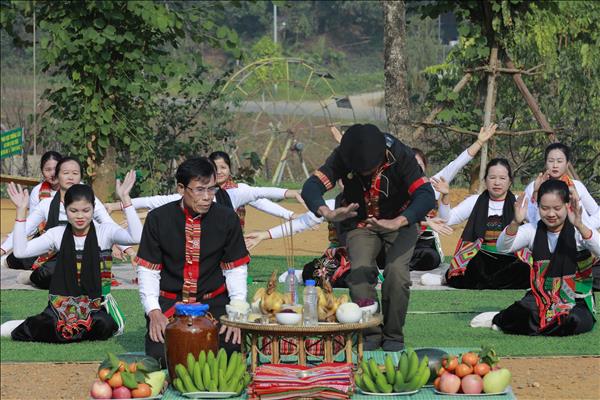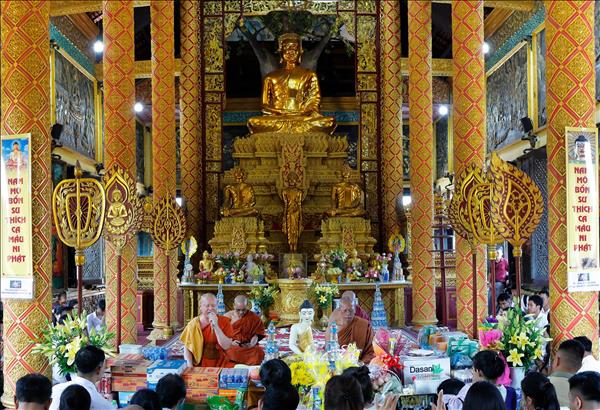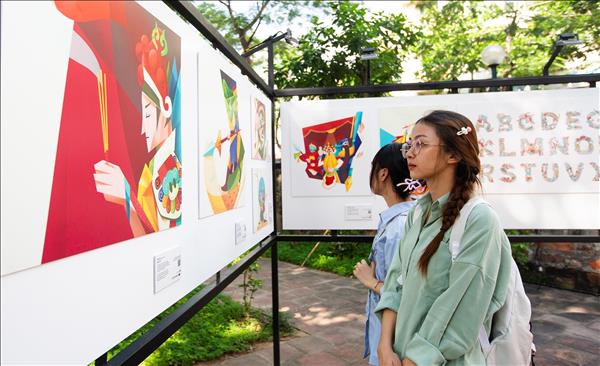Vietnam has gone through 30 years of Doi Moi (renovation), which started in 1986. Over the years, the Vietnamese people have showed their great expectation of the process and also their determination to change their country for the better.
We met Tran Thi Hai Nhi, a retired woman, at the National Museum of History in Hanoi. She brought along an ice bucket and told us that she would donate it to the museum for display at the exhibition, “Doi Moi – A Journey of Dreams”.
The woman recalled memories of those days under the government’s subsidies years ago.
“In 1984, my husband went to the former Soviet Union to work,” she said. “He sent home an ice bucket in case I had some financial difficulties I could sell it. At that time, an ice bucket was truly a valuable asset, and not everyone could buy it even if they had money”.
Nhi said she used the ice bucket to hold food for her lunch at the office, and in the afternoon when she came home she bought some ice cream for her children.
Since the country launched the Doi Moi, i.e. renovation of the country, it became much easier for those from abroad wanted to send home necessary items. At present, Nhi does not use the ice bucket any more, instead they have a refrigerator and electric rice cooker. However, to her and her children, the ice bucket is a valuable souvenir, which reminds them of their past difficult time.
“Before 1986, most Vietnamese people travelled by bicycle. That’s why, having a motorbike was really a big dream,” said Nguyen Thi Van, another woman at the exhibition.
Van said that in 1989 her husband who went to study in the former Soviet Union, sent home a DD motorbike. A neighbor asked her for change of a plot of land, 60 square meters large and located right on a main street in Hanoi, but she refused. She gave the motorbike to her father who rode it to work at the Institute of Geology. The motorbike is still working well.
“Life has changed much for the better over the past years. My family can travel, both in Vietnam and overseas, by different means of transport, including airlines, bus, high-speed ship, metro and others, which we could only watch in movies or in dreams,” Van said, adding that despite those modern means, the DD motorbike is still an important part in her family’s memories. Knowing about the exhibition, “Doi Moi – A Journey of Dreams”, she decided to donate it to the museum for display.
One of memories engraved deeply in the mind of many Vietnamese people who lived hard during the 1980s are the “coupons for food”.
Dao Xuan Ngu, a retired cadre from the Ministry of Education and Training, said he would never forget those days when people had to use the coupons to buy food and other necessities, such as fabrics, pork, eggs and kerosene.
“My wife and I had to wake up early in the morning, around 3-4am, to queue up to purchase items, including meat, rice and bread. Each item had a different kind of coupon and they were limited to the family members. If we arrived late, we could not buy anything,” Ngu recalled.
Seeing the coupons displayed at the exhibition, Ngu said that the Doi Moi truly has changed the lives of the people, including his family.
“Food and daily necessities are now abundant for sale that require no more coupons,” said Ngu, adding that it is only a small part of the huge achievements the Doi Moi process has recorded in all walks of life in Vietnam over the past 30 years.
While implementing the Doi Moi, the Vietnamese Party and State were determined to develop local infrastructure projects, including electricity. We met Le An Khanh, who participated in building the 500KV electricity grid during the years 1992-1994.
Khanh said, on May 17, 1992, he joined another 100 engineers and technical workers to attend the launching ceremony of building the No. 249 foundation base in Cam Xuyen District, central Ha Tinh Province. The event was attended by the then Prime Minister Vo Van Kiet. After two years of construction under very harsh weather conditions, the cable line was completed and electricity went through on May 27, 1994.
The 500KV high-voltage power grid was built as a witness to the electricity sector’s success in the first years of the country’s renovation stage.
In 2006, Khanh re-visited some localities in Ky Anh District of Ha Tinh Province, where he saw two 500KV-power cables running parallel. The local people living in the former poor locality no longer used kerosene lamps, instead they accessed electricity from the national power grid, which lit their home, village public works and roads as well.
The woman recalled memories of those days under the government’s subsidies years ago.
“In 1984, my husband went to the former Soviet Union to work,” she said. “He sent home an ice bucket in case I had some financial difficulties I could sell it. At that time, an ice bucket was truly a valuable asset, and not everyone could buy it even if they had money”.
Nhi said she used the ice bucket to hold food for her lunch at the office, and in the afternoon when she came home she bought some ice cream for her children.
Since the country launched the Doi Moi, i.e. renovation of the country, it became much easier for those from abroad wanted to send home necessary items. At present, Nhi does not use the ice bucket any more, instead they have a refrigerator and electric rice cooker. However, to her and her children, the ice bucket is a valuable souvenir, which reminds them of their past difficult time.
 Doi Moi – A Journey of Dreams” is the name of an exhibition held by the National Museum of History, on the occasion of the 30th anniversary of the country’s renovation process (1986-2016). 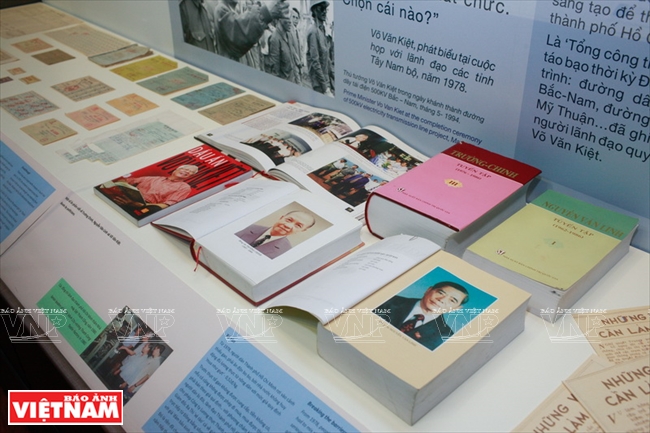 At the exhibition, visitors can learn about the country’s leaders who launched the Doi Moi process.  Prime Minister Vo Van Kiet is the first leader in the Doi Moi process. In the very important point of time that could decide the destiny of the country, he was a whole-hearted leader, together with other Party and State leaders, in implementing the Doi Moi process to success. 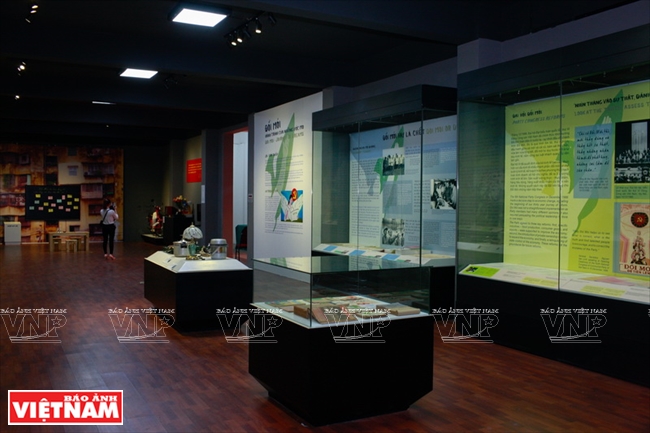 The modern display space presents different topics and objects that introduce visitors to the policy and guidelines of Vietnam’s Doi Moi process after 30 years.  A foreign visitor is interested in learning about the Doi Moi process in Vietnam. |
| The policy for Doi Moi, or renovation of the country, was set forth at the Sixth National Congress of the Communist Party of Vietnam in December 1986. Over the past 30 years, it has changed the country in all walks of life. To every Vietnamese who lived before or post the Doi Moi period, they still keep some items or have memories about that period of time. |
Van said that in 1989 her husband who went to study in the former Soviet Union, sent home a DD motorbike. A neighbor asked her for change of a plot of land, 60 square meters large and located right on a main street in Hanoi, but she refused. She gave the motorbike to her father who rode it to work at the Institute of Geology. The motorbike is still working well.
“Life has changed much for the better over the past years. My family can travel, both in Vietnam and overseas, by different means of transport, including airlines, bus, high-speed ship, metro and others, which we could only watch in movies or in dreams,” Van said, adding that despite those modern means, the DD motorbike is still an important part in her family’s memories. Knowing about the exhibition, “Doi Moi – A Journey of Dreams”, she decided to donate it to the museum for display.
One of memories engraved deeply in the mind of many Vietnamese people who lived hard during the 1980s are the “coupons for food”.
Dao Xuan Ngu, a retired cadre from the Ministry of Education and Training, said he would never forget those days when people had to use the coupons to buy food and other necessities, such as fabrics, pork, eggs and kerosene.
“My wife and I had to wake up early in the morning, around 3-4am, to queue up to purchase items, including meat, rice and bread. Each item had a different kind of coupon and they were limited to the family members. If we arrived late, we could not buy anything,” Ngu recalled.
Seeing the coupons displayed at the exhibition, Ngu said that the Doi Moi truly has changed the lives of the people, including his family.
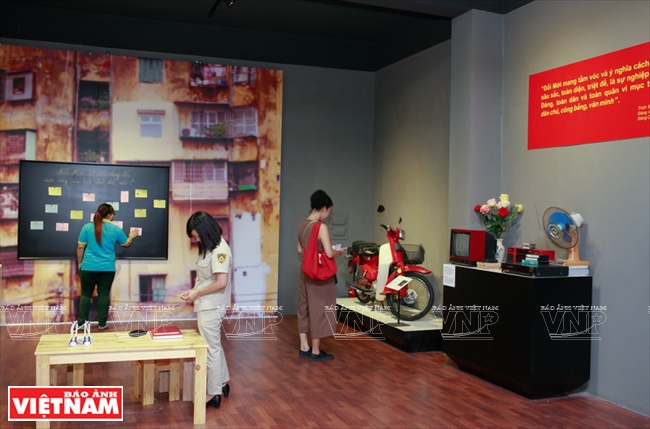 A corner of the exhibition, “Doi Moi – A Journey of Dreams”, at the National Museum of History. 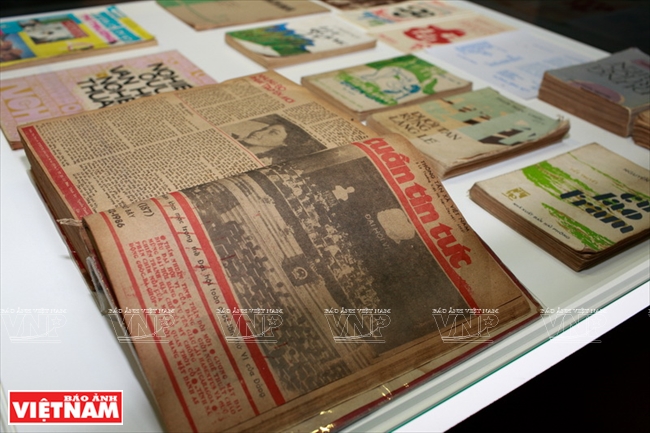 Cultural publications help much in encouraging the Doi Moi process, in service of the people’s cultural and spiritual life during the first years of the Doi Moi. 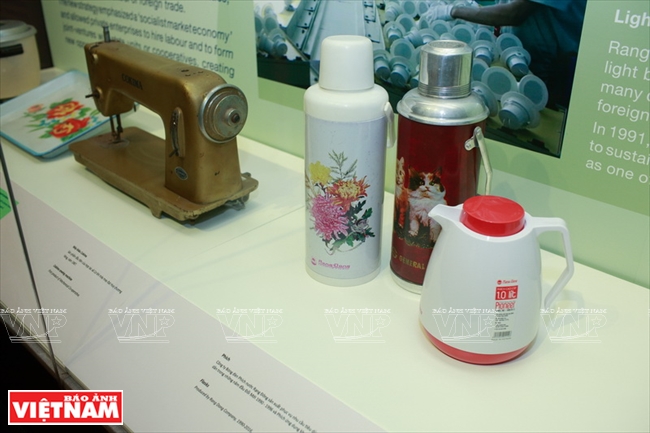 Ordinary objects, such as the Rang Dong thermos and sewing machines, are proof of the success that the Doi Moi recorded in its prime stage to reach the goal, i.e. to produce enough consumer goods for the people. 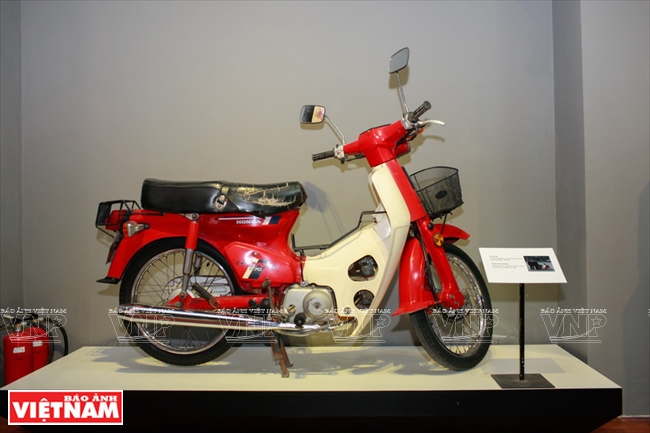 The DD motorbike donated by Van to the National Museum of History for display. 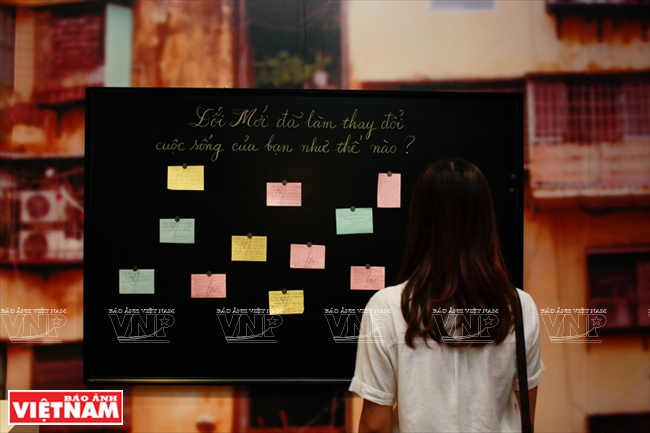 Visitors’ comments on the exhibition, “Doi Moi – A Journey of Dreams”. 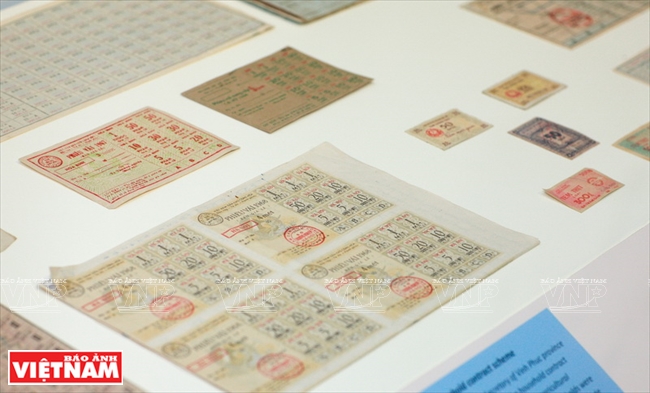 The coupons used in the subsidised period on display at the exhibition help visitors understand more about the difficult time that the people were facing.  Slogans to highlight the people’s determination to implement the Doi Moi.  Imported goods from abroad to serve the people in the first years of the Doi Moi process. 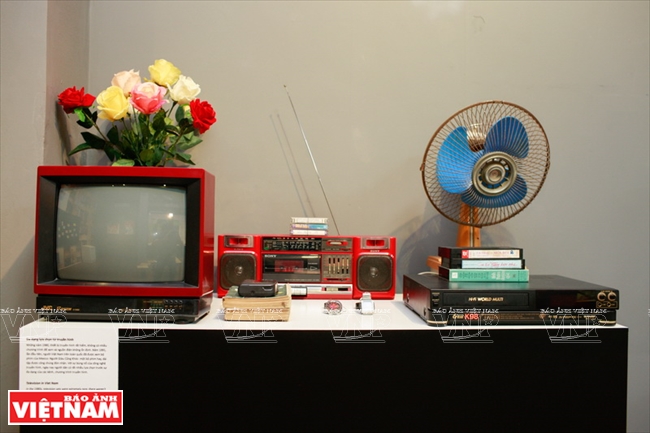 The Doi Moi has brought many opportunities to and changes in the lives of many Vietnamese people. 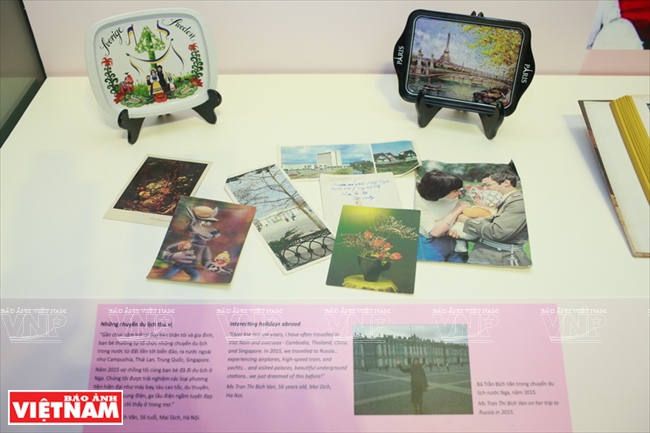 Cultural publications support the Doi Moi process and encourage the people to implement it as well. 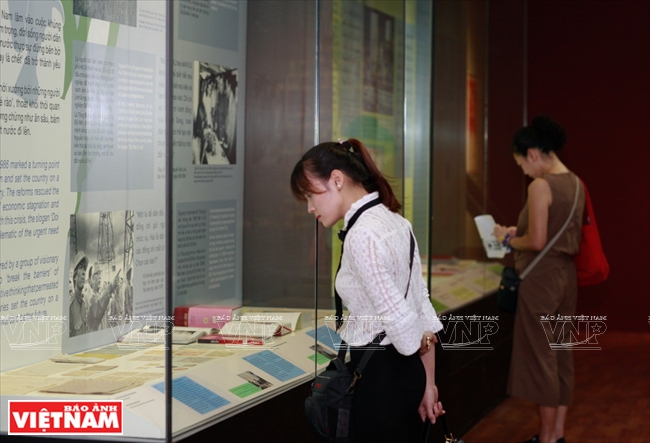 Visitors at the exhibition, “Doi Moi – A Journey of Dreams”, held by the National Museum of History on the occasion of the 30th anniversary of the Doi Moi process. |
“Food and daily necessities are now abundant for sale that require no more coupons,” said Ngu, adding that it is only a small part of the huge achievements the Doi Moi process has recorded in all walks of life in Vietnam over the past 30 years.
While implementing the Doi Moi, the Vietnamese Party and State were determined to develop local infrastructure projects, including electricity. We met Le An Khanh, who participated in building the 500KV electricity grid during the years 1992-1994.
Khanh said, on May 17, 1992, he joined another 100 engineers and technical workers to attend the launching ceremony of building the No. 249 foundation base in Cam Xuyen District, central Ha Tinh Province. The event was attended by the then Prime Minister Vo Van Kiet. After two years of construction under very harsh weather conditions, the cable line was completed and electricity went through on May 27, 1994.
The 500KV high-voltage power grid was built as a witness to the electricity sector’s success in the first years of the country’s renovation stage.
In 2006, Khanh re-visited some localities in Ky Anh District of Ha Tinh Province, where he saw two 500KV-power cables running parallel. The local people living in the former poor locality no longer used kerosene lamps, instead they accessed electricity from the national power grid, which lit their home, village public works and roads as well.
|
“Doi Moi – A Journey of Dreams” is a special exhibition held by the National Museum of History in Hanoi. It displays about 200 objects, documents and pictures of the 30-year renovation process, through which visitors can learn more about one of the country’s historical stages that is full of significance. |
Story: Ngan Ha - Photos: Viet Cuong


